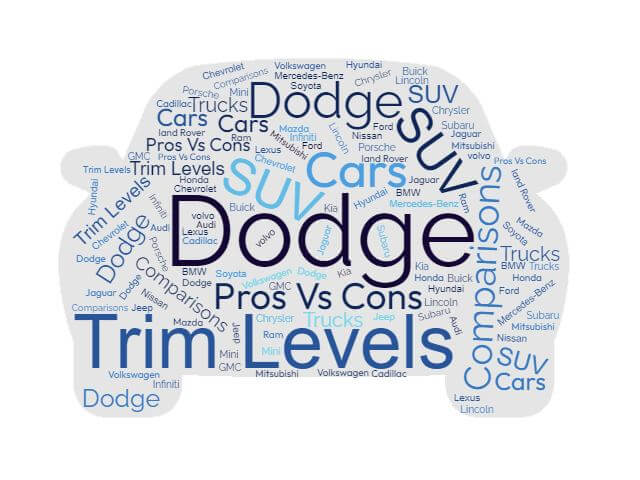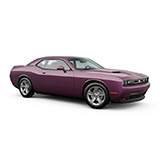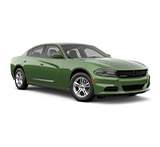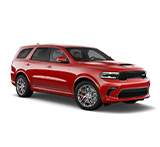Dodge

About Dodge
Today, Dodge is one of the largest and most well respected automobile brands in the world. Though they were but a small company at the beginning, they spent the better part of the 1900's working towards becoming the foremost American manufacturer of cars, sport utility vehicles, minivans and other vehicles. The following takes a closer look at the deep and rich history of Dodge.
1) 1900 - Founded in Detroit, Michigan. The company was first known as the Dodge Brothers, as it was founded by John Francis Dodge and Horace Elgin Dodge. As automobiles were still in their infancy, the company started out as an auto parts supplier.
2) 1914 - This year saw the design of the Dodge Model 30 by Horace Dodge, which marked the creation of the first Dodge automobile. It was designed as a four-cylinder vehicle. Many of the aspects of this design would later become an industry standard, including a body that consisted of all steel, 35 HP and an electrical system that ran on 12-volts, as opposed to the usual electrical system of 6-volts.
3) 1915 - During this year, the Dodge Brothers company officially transitioned to an automobile manufacturer and started selling the Dodge Model 30 on the market. By this time, the Dodge Brothers store had earned a reputation as one of the best stores in America for auto parts, which helped with their transition.
4) 1916 - In only their second year as an automobile manufacturer, the vehicles designed by Dodge Brothers landed in second place for all sales within the U.S. during that year.
5) 1920 - This year brought the deaths of both Horace and John Dodge. The Dodge Brothers company had remained in second place with automobile sales until this year, though this would be the last of that five-year streak. Under new leadership of Frederick Haynes, the Model 30 became what was known as the Series 16.
6) 1925 - In 1925, the widows of the two Dodge brothers sold the company to an investment group that went by the name of Dillon, Read & Co. The company was sold for a staggering price of nearly $150 million.
7) 1927 - Though changes within Dodge vehicles had been exceedingly minimal since the Model 30 in 1915, 1927 introduced a myriad of large changes to Dodge vehicles as a whole. For instance, the six-cylinder Senior line of vehicles was placed onto the market.
8) 1928 - This year marked the removal of all four-cylinder models from their line of vehicles, paving the way for the advent of two smaller six-cylinder models, known as the Victory Six and the Standard Six.
9) 1928 - As changes in their vehicle lines were underfoot, the Dodge Brothers was once again sold, this time to the Chrysler Corporation.
10) 1930 - This year saw the design of the first line of eight-cylinder vehicles for Dodge.
11) 1942 - With the dawn of the second World War, Dodge transitioned away from all passenger car assembly lines to the creation of war vehicles in support of the allies. This lasted for three years until the end of the war, after which the reputation of Dodge skyrocketed, helping to bring forth the design of two new Dodge vehicles once switching back to passenger car assembly lines for civilians.
12) 1953 - The majority of Dodge vehicles began to go through a plethora of huge changes in both design and construction, as Virgil Exner was hired to be the corporate design chief for the company. Dodge's first V8 engine was brought to the market during this same year. These stronger engines helped to refocus Dodge in the years to come.
13) 1961 - Dodge introduced their first compact car to the market, naming it the Lancer. Though it was not so in the beginning, the Lancer became one of Dodge's most successful vehicles over the next decade.
14) 1965 - Dodge brought back the Coronet model, as well as the Charger, which was put into use as a vehicle for NASCAR, proving to be wildly popular over the next few years.
15) 1973 - Dodge started importing smaller models from Mitsubishi due to the 1973 Oil Crisis that affected all auto manufacturers and decreased the amount of large cars being placed onto the market.
16) 1979 - Dodge didn't move fast enough to get rid of their larger models, resulting in Lee Iacocca of Chrysler asking for a federal loan from the U.S. congress in order to save the company from bankruptcy, which he received.
17) 1980's - The 1980's was a time of growth for Dodge, as they brought a wealth of new front-wheel drive vehicles to the market, including the renowned Dodge Caravan, known today as one of the most popular minivans.
18) 1993 - During this time, Dodge became much more aggressive with the types of cars it was designing, including bringing the V10 Viper and Dodge Ram pickup to the market.
19) 1998 - The Chrysler Corporation, of which Dodge was owned by, merged with Daimler Benz at this time, which brought about a number of German models over the next few years. This merger was never deemed successful.
20) 2009 - Chrysler Corporation was hit hard by the collapse of the market in '08 and was forced to file for bankruptcy in 2009. They were bought by Fiat later that same year.
21) 2014 - Fiat announced a huge restructuring this year, with Dodge having to make some large changes as well. Both the Dodge Avenger and Dodge Grand Caravan are to be discontinued, though a subcompact vehicle will be brought to the market in 2018.
While Dodge has seen its fair share of mishaps, issues and near bankruptcies over the course of their storied history, they have always rebounded stronger than ever, delivering vehicles that have set the standard for the entire industry. They have always adapted quickly to the market and it's clear that Dodge is here to stay.




